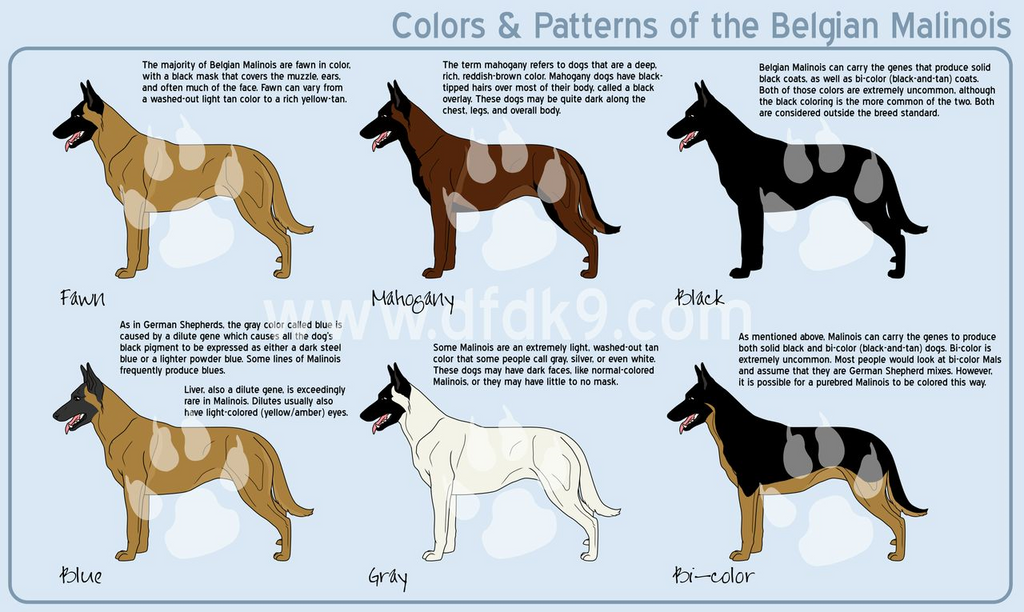The Amazing Belgian Malinois
The Belgian Malinois is a medium-large size dog that weighs between 40-80 lbs and is between 22" to 26" in height. Their name is pronounced as MAL-in-wah. These are one of four Belgian Sheepdogs and are very hardworking and focused. They are protective of their home, family, and livestock.
AKC typically recognizes the Belgian Malinois in the colors of fawn to mahogany to red with a black mask, ears, and tips. Minimal white on the chest and feet. The short, smooth, and hard outer coat and dense undercoat require minimal grooming and are very easy to care for. Regular washing is not recommended as their skin has waterproofing.

This intelligent, energetic, protective breed is still more of a working dog than a companion. They have a strong drive to work. The Belgian Malinois makes an excellent farm dog, watchdog, police dog, and herding dog because of their instinct to protect their family, home, or whatever else they are trained to protect. They can make a great family pet as well. Early socialization is a must for children, other dogs, and pets. They do best if they are socialized from the time they are born. They can be dominant towards other dogs. Early, consistent, firm but not harsh training is essential.
They are more challenging for a novice to train than someone who is more experienced. The Belgian Malinois has tones of energy and loves to be on the go. They require a yard with plenty of room to run and play. They are not meant to be indoors all day. This breed enjoys being with their family members and is not meant to be left alone for long periods; they will get bored and find some way to fill their time.
Originating in Belgium, the Belgian Malinois is one of four Belgian Sheepdogs. Their name comes from the Belgian city of Malines. It is recognized as its breed by the AKC; however, all four Belgian Sheepdogs are considered to be one breed in some countries. The Belgian Malinois is popular in Belgium and is used for herding, police work, and a search and rescue dog. It is definitely not advisable to encourage their guarding instincts when young. They can get confused and may tend to guard you in inappropriate situations. Their natural guarding instincts will kick in, if and when necessary.

A breed with such a strong work drive, protective instinct, and high energy makes an excellent watchdog and farm dog. They are suitable for families that are active and will meet their work and exercise needs. A dynamic, busy Belgian Malinois is a happy Belgian Malinois.
If you need something for your cats and dogs, visit our Online Pet Supplies Store at https://pawsandme.co/collections/all
Continue reading



